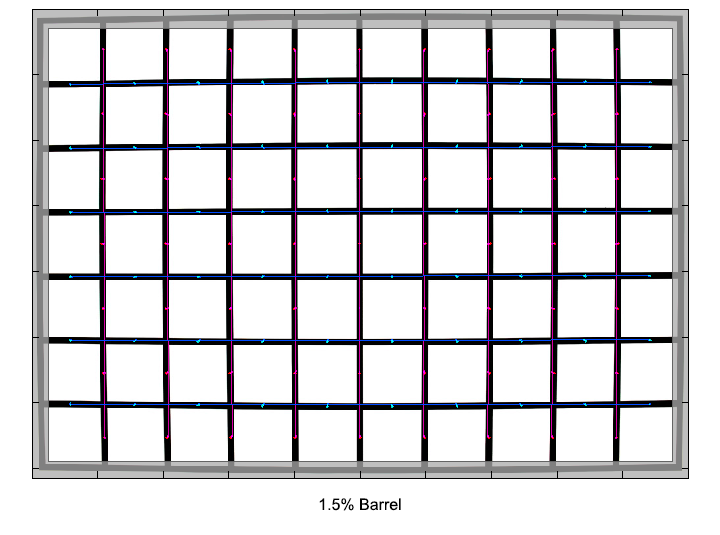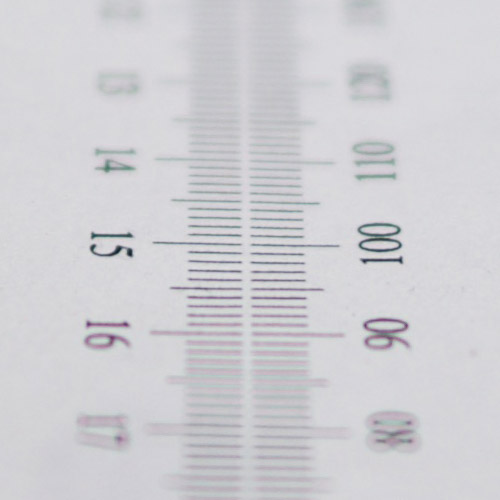|
Page 2 of 3

Distortion
The lens produces a moderate amount of barrel distortion at 1.5%. For a 24mm prime, this is a typical amount, which can be very noticeable in images with straight lines near the borders (for example architecture shots).

Vignetting
Fast wide lenses typically show very visible vignetting wide open, still the amount of light fall-off on the Nikkor surprises: at f/1.8, the corners darken by a whopping 2.7 stops.
As usual, stopping down reduces the amount of vignetting, however even stopped to to medium and small apertures, there's half a stop of light fall-off left.
We're performing our vignetting analysis based on
(uncorrected) JPEGs straight from the camera. The JPG engine of the Nikon D3x features a rather flat
gradation curve, thus has a moderate contrast characteristic, resulting in comparatively low vignetting figures - the
corresponding Canon figures are roughly 40% higher due to the more
aggressive default contrast setting.

MTF (resolution)
The Nikkor shows excellent resolution in the image center straight from the maximum aperture. The borders and corners are very impressive, too, with very good resolution throughout the tested aperture range. The borders even reach excellent figures at medium aperture settings.
The lens showed a tiny amount of focus shifting when stopping down (residual spherical aberration), not to a degree that it is field-relevant, though.
Please note that the MTF results are not directly comparable across the different systems!
Below is a simplified summary of the formal findings. The chart shows line widths
per picture height (LW/PH) which can be taken as a measure for sharpness.
If you want to know more about the MTF50 figures you may check out the corresponding
Imatest Explanations

Chromatic Aberrations (CAs)
Chromatic aberrations (color shadows at harsh contrast transitions) are well controlled, with values of around 0.5 pixels on average at the image borders wide open, slowly increasing to almost 0.8 pixels stopped down to f/11.

Bokeh
It's usually not the primary way to use a wide angle lens, however the Nikkor has a comparatively short minimal focus distance combined with a fairly large maximum aperture, so it allows to separate a (close) main subject from the background. In such a shot, the quality of image blur in out-of-focus areas is important.
Typically, wide angle lenses with aspherical elements struggle in this regard, the Nikkor however delivers very pleasing results. General image blur both in front of as well as behind the focal plane is surprisingly smooth.
Background highlights are evenly filled and show almost no outlining wide open, a little more so when stopped down, however. In addition, there are traces of bokeh fringing around highlights (see the next section)

Bokeh Fringing
Bokeh fringing (non-coinciding focal planes of the various colors) is a common issue with relatively fast glass. As you can notice below the halos have different colors - magenta (red + blue) in front of the focus point and green beyond. Unlike lateral CAs, bokeh fringing can not easily be fixed in post processing.
Typical for most fast primes the Nikkor shows some bokeh fringing at large aperture settings. The fringing can be reduced by stopping down and it's mostly gone from f/4 onward.
In addition, these shots also illustrate the tiny amount of focus shift when stopping down that was mentioned in the MTF section.
|
Move the mouse cursor over the f-stop marks below to observe the respective LoCAs
|
| f/1.8 |
f/2.8 |
f/4 |
f/5.6 |
f/8 |
|

|
|